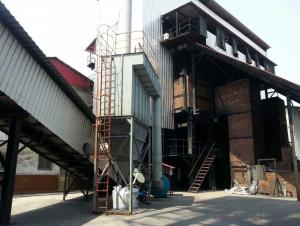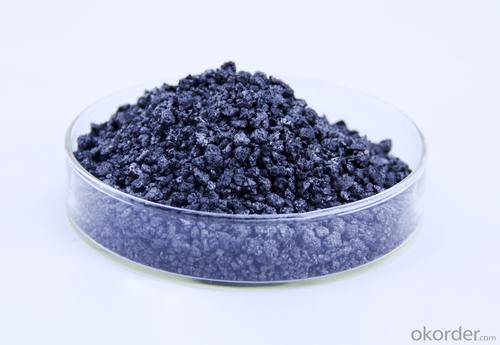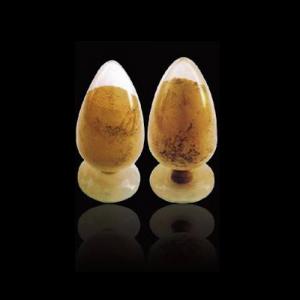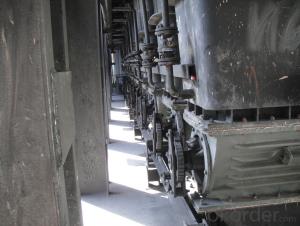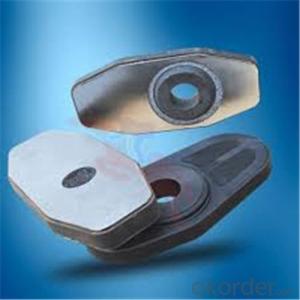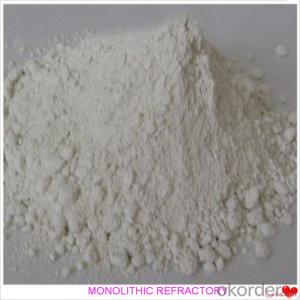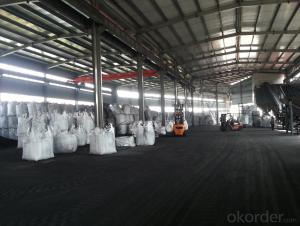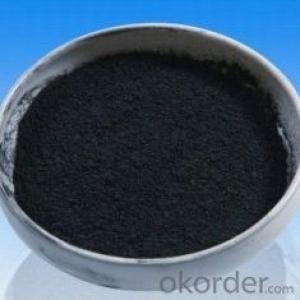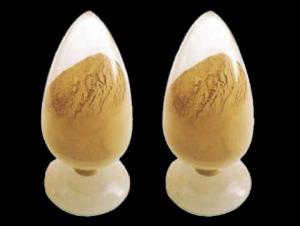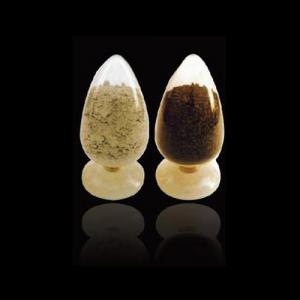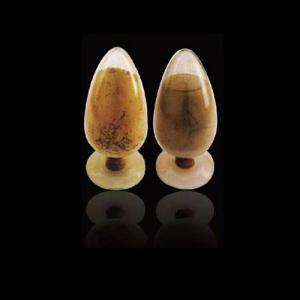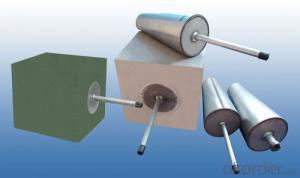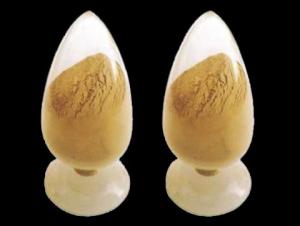Monolithic Refractories for Iron and Steel Industry:Low N Calcining Petroleum Coke with Good Quantity
- Loading Port:
- Shekou
- Payment Terms:
- TT or LC
- Min Order Qty:
- 20 m.t
- Supply Capability:
- 1000 m.t/month
OKorder Service Pledge
OKorder Financial Service
You Might Also Like
Factory Background
The factory is majorly running and operating carbon additive (pitch coke, calcined petroleum coke and anthracite), low nitrogen carbon additive, and brake pad making material. Company is the long term supplier of Sinosteel Corporation, Shanghai Carbon Corporation, the plant of SGL Group the Carbon Company in China and some largest special carbon products producing plants.
YUAI also supplies huge amout of high quality carbon additive and graphite carbon additive to steel plants, foundries and ferrotungsten plants. YUAI has been assigned by BAO STEEL as the only organization for processing pitch coke for export purpose. The group’s major products are constantly exported to Japan, Korea, Malaysia, South East Asia countries, Europe and America, which receive praises by our consumers.
The group has invested numbers of calcinators in Anhui China to ensure the capability of producing and processing huge amount of carbon additive. Further investment is on process. According to the orders from customers, YUAI is able to processing and providing different specifications of carbon additive and other products. To provide best quality of products and to offer customers most satisfied service is YUAI’s operating objectives.
Calcined Petroleum Coke
FC:98.5%min,
S:0.5%max
A:0.8%max
V:0.7%max
Mositure:0.5%max
Size:1-5mm
This product is mainly used in steel-making and foundry. Calcined Petroleum Coke
Calcined Petroleum Coke comes from delayed coke which extracted from oil refinery. Although Calcined Petroleum Coke contains a little bit higher level of sulfur and nitrogen than pitch coke, the price advantage still makes it widely used during steel-making and founding as a kind of carbon additive/carburant.
Technology:
Laborary Equpment
In our lab,we has a high precision balance,mullfe furnace,sample making machine, dring box,sulfur measurement instrument and other calibratiing equipments.As a result,before deliverung to our customers,our products have to pass a strict test to ensure the quality and components.The testing reports will be sent to our customers to confirm untill they satisfy with it.
Packaging & Delivery
Packaging Detail:25kg paper bag into 1t weaving bag 5kg, 10kg and 20kg weaving bag into 1t weaving bag 25kg weaving bag put on pallet covered with entanglement wrap product direct into packing bag 25kg paper bag put on pallet covered with entanglement Wrap 25kg weaving bag into 1t weaving bag.
Delivery Details: 7 days

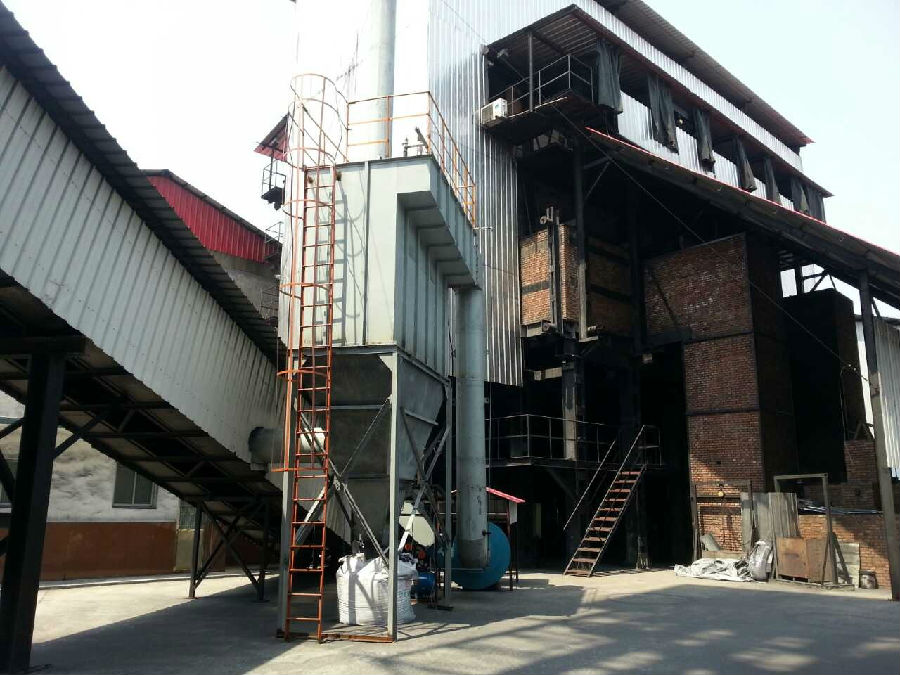
- Q: How do monolithic refractories resist abrasion in the iron and steel industry?
- Monolithic refractories, with their unique composition and properties, are specifically designed for the iron and steel industry to resist abrasion. Made from a single homogeneous material, they exhibit exceptional strength and durability when subjected to continuous abrasion. The high density of monolithic refractories is one of the key factors contributing to their abrasion resistance. These refractories are manufactured with tightly packed particles, resulting in a solid and compact structure. This density minimizes wear and tear caused by the constant movement of materials like iron and steel. Furthermore, monolithic refractories often contain high levels of alumina, known for its excellent resistance to abrasion. Alumina is a highly refractory material that can withstand high temperatures and mechanical stress without deteriorating. Its presence in monolithic refractories creates a protective layer that resists abrasion caused by the movement and impact of iron and steel particles. In addition, monolithic refractories can be designed with specific additives and binders that further enhance their resistance to abrasion. These additives may include silicon carbide, mullite, or zirconia, which are renowned for their superior mechanical strength and ability to withstand wear. The binders used in the manufacturing process also contribute to the refractory's integrity and its ability to resist abrasion by providing a cohesive structure. In conclusion, the combination of high density, alumina content, specialized additives, and binders makes monolithic refractories highly resistant to abrasion in the iron and steel industry. They can withstand the harsh conditions and constant movement of materials, ensuring long-lasting performance and efficiency in various applications within the industry.
- Q: What are the advantages of using insulating castables in the iron and steel industry?
- There are several advantages of using insulating castables in the iron and steel industry. Firstly, insulating castables provide excellent thermal insulation. They have low thermal conductivity, which helps to minimize heat loss from the furnaces and other equipment. This is particularly important in the iron and steel industry, where high temperatures are required for various processes. The insulation provided by castables helps to maintain a stable temperature within the furnace, resulting in improved energy efficiency and reduced fuel consumption. Secondly, insulating castables have high strength and excellent resistance to thermal shock. This is crucial in the iron and steel industry, where extreme temperature changes are common. The castables can withstand rapid heating and cooling cycles without cracking or compromising their structural integrity. This ensures the longevity and durability of the refractory lining, reducing the need for frequent maintenance and repairs. Furthermore, insulating castables are lightweight and easy to install. Their low density makes them easier to handle and transport, resulting in reduced labor costs and shorter installation times. This is particularly advantageous in large-scale iron and steel plants, where time and cost efficiency are critical. Moreover, insulating castables offer good corrosion resistance. The harsh environment in the iron and steel industry, with the presence of molten metal, slag, and various chemicals, can cause corrosion and erosion of refractory materials. Insulating castables are designed to withstand these corrosive conditions, ensuring the longevity of the lining and minimizing the risk of downtime and production disruptions. Lastly, insulating castables are versatile and can be customized to meet specific requirements. They are available in various compositions and densities, allowing for tailored solutions to different applications within the iron and steel industry. This versatility ensures optimal performance and efficiency in various furnace and equipment designs. In conclusion, the advantages of using insulating castables in the iron and steel industry include excellent thermal insulation, high strength, resistance to thermal shock, lightweight installation, corrosion resistance, and versatility. These benefits contribute to improved energy efficiency, reduced maintenance costs, increased durability, and enhanced overall productivity in the industry.
- Q: What are the challenges in recycling and disposing of monolithic refractories?
- Recycling and disposing of monolithic refractories pose several challenges that need to be addressed in order to minimize environmental impact and maximize resource efficiency. One of the main challenges is the handling and transportation of monolithic refractories due to their heavy and bulky nature. These materials are often used in high-temperature applications, such as furnace linings, and can be difficult to dismantle and remove from equipment. The weight and size of monolithic refractories make it challenging to transport them to recycling or disposal facilities, requiring specialized equipment and infrastructure. Another challenge is the heterogeneity of monolithic refractories, which often contain various types of refractory materials, binders, and additives. This complexity makes it difficult to separate and categorize different components for effective recycling. The lack of standardized recycling processes for monolithic refractories further complicates the recycling efforts. Furthermore, the high melting points of refractory materials used in monolithic refractories can make it energy-intensive and costly to recycle them through conventional methods like melting and remolding. Alternative recycling methods, such as thermal treatment or chemical processing, need to be explored and optimized to make the recycling process more economically and environmentally viable. Ensuring the proper disposal of monolithic refractories is also a challenge. If these materials are not recycled, they often end up in landfills, taking up valuable space and potentially leaching harmful substances into the environment. Landfilling refractories can also pose a risk of contamination if they are not properly managed or if hazardous additives are present in the materials. To address these challenges, it is crucial to invest in research and development to develop more efficient and cost-effective recycling technologies for monolithic refractories. Collaboration between manufacturers, recycling facilities, and regulatory bodies is also essential to establish guidelines and standards for the recycling and disposal of these materials. Additionally, educating industries and end-users about the importance of recycling and the availability of recycling options can help increase the demand and feasibility of recycling monolithic refractories.
- Q: What are the environmental considerations associated with monolithic refractories?
- The environmental considerations associated with monolithic refractories primarily revolve around their production and disposal. The manufacturing process of monolithic refractories involves high energy consumption and emissions, contributing to carbon dioxide and other greenhouse gas emissions. Additionally, some raw materials used in their production, such as silica, can have negative environmental impacts during extraction. In terms of disposal, monolithic refractories are typically difficult to recycle due to their composition and structure. As a result, they often end up in landfills, which can contribute to pollution and waste management issues. Overall, the environmental considerations associated with monolithic refractories highlight the need for sustainable manufacturing practices, improved waste management strategies, and the development of alternative refractory materials that have less negative environmental impact.
- Q: How are monolithic refractories used in the repair and maintenance of ladle and tundish linings?
- Monolithic refractories are a type of refractory material that is commonly used in the repair and maintenance of ladle and tundish linings in the steel industry. These linings are crucial components of ladles and tundishes, which are used for the transportation and treatment of molten metal during the steelmaking process. When ladle and tundish linings are subjected to high temperatures and corrosive environments, they can deteriorate over time. This deterioration can lead to various issues such as heat loss, contamination of molten metal, and reduced refractory lining lifespan. To address these problems, monolithic refractories are used as repair and maintenance materials. Monolithic refractories are typically made from a combination of different refractory aggregates, binders, and additives. They are available in various forms, such as castables, gunning mixes, and ramming mixes. These materials are designed to be easily applied and shaped to conform to the specific geometry and dimensions of the ladle or tundish lining. During the repair process, the damaged areas of the lining are removed, and the monolithic refractories are then applied to these areas. Castables can be poured and vibrated into place, while gunning mixes can be sprayed using a high-pressure gunning machine. Ramming mixes, on the other hand, are manually compacted into the lining using a ramming tool. Monolithic refractories offer several advantages in the repair and maintenance of ladle and tundish linings. Firstly, their flexibility allows for easy installation and shaping, ensuring a snug fit to the lining. This helps to maximize the effectiveness of the refractory lining in preventing heat loss and maintaining the integrity of the ladle or tundish. Secondly, monolithic refractories have excellent thermal shock resistance and resistance to chemical attack. This makes them highly durable and capable of withstanding the harsh conditions encountered in ladles and tundishes. They can withstand repeated heating and cooling cycles without cracking or spalling, providing long-lasting protection to the lining. Lastly, monolithic refractories can be easily repaired and replaced when necessary. Their application and removal processes are relatively straightforward, allowing for efficient maintenance of ladle and tundish linings. This helps to minimize downtime and maintain the overall productivity of the steelmaking process. In conclusion, monolithic refractories play a crucial role in the repair and maintenance of ladle and tundish linings. Their ease of application, excellent thermal shock resistance, and resistance to chemical attack make them ideal materials for extending the lifespan and optimizing the performance of these linings in the steel industry.
- Q: What are the considerations for repairing and relining monolithic refractories?
- When repairing and relining monolithic refractories, there are several key considerations that need to be taken into account. First and foremost, it is crucial to assess the extent of the damage or deterioration in order to determine the appropriate repair method. Factors such as the type of refractory material, the operating conditions, and the expected service life must be considered. Additionally, it is essential to select the right refractory material for the repair or relining process. This involves evaluating the temperature range, chemical resistance, thermal conductivity, and mechanical properties of the refractory material to ensure it is compatible with the specific application. Another important consideration is the proper preparation of the surface before applying the repair material. This may involve removing any loose or damaged refractory, cleaning the surface thoroughly, and creating a suitable bonding surface to ensure optimal adhesion. Furthermore, the application technique and curing process of the repair material should be carefully followed to achieve the desired performance and durability. This may involve proper mixing, application thickness, drying time, and temperature control. Lastly, it is crucial to conduct regular inspections and maintenance to identify any signs of deterioration or damage early on. This proactive approach will help prevent major repairs or relining in the future and prolong the overall lifespan of the monolithic refractories.
- Q: What are the typical applications of monolithic refractories in the iron and steel industry?
- Monolithic refractories are widely used in various applications within the iron and steel industry. These refractories, which are made of a single material, offer several advantages such as ease of installation, resistance to thermal shock, and excellent resistance to chemical attacks. Here are some typical applications of monolithic refractories in the iron and steel industry: 1. Blast Furnace: Monolithic refractories are used in the lining of blast furnaces, where they are subjected to extreme temperatures and chemical reactions. They provide thermal insulation, prevent erosion, and resist the corrosive effects of molten iron and slag. 2. Ladles and Tundishes: Monolithic refractories are used to line ladles and tundishes, which are vessels used for transporting and transferring molten metal. These refractories offer good thermal insulation and resistance to erosion and chemical attack, ensuring the integrity of the vessels. 3. Steelmaking Converters: Monolithic refractories are utilized in converters, which are used in the steelmaking process to convert molten pig iron into steel. These refractories provide protection against the high temperatures and aggressive chemical environments encountered during the process. 4. Electric Arc Furnaces (EAF): Monolithic refractories are used to line the walls and roofs of EAFs, which are used to melt scrap steel for recycling. These refractories offer excellent thermal insulation, resistance to slag erosion, and thermal shock resistance, ensuring the longevity and efficiency of the furnace. 5. Continuous Casting: Monolithic refractories are employed in the continuous casting process, where molten steel is solidified into a continuous slab or billet. These refractories line the walls and floors of the casting molds, providing thermal insulation and resistance to chemical attack from the molten steel. 6. Reheating Furnaces: Monolithic refractories are used in reheating furnaces, which are used to heat steel billets or ingots prior to further processing. These refractories provide insulation, resist high temperatures, and ensure uniform heating of the metal. Overall, monolithic refractories play a crucial role in the iron and steel industry by providing reliable and durable linings in various applications. Their ability to withstand extreme temperatures, chemical attacks, and thermal shocks makes them indispensable for maintaining the integrity and efficiency of the production processes.
- Q: How do monolithic refractories perform in reheating furnace roof applications?
- Monolithic refractories perform exceptionally well in reheating furnace roof applications due to their superior thermal shock resistance, high strength, and excellent resistance to chemical attack at high temperatures. These refractories provide a reliable and durable lining that can withstand the extreme conditions of reheating furnaces, ensuring efficient heat transfer, reduced maintenance, and prolonged furnace life.
- Q: What are the main factors affecting the thermal conductivity of monolithic refractories?
- The main factors affecting the thermal conductivity of monolithic refractories are the composition and structure of the refractory material, the porosity and density of the material, the presence of any impurities or defects, and the temperature and pressure conditions at which the refractory is being used.
- Q: What are the key properties of pumpable refractories used for monolithic refractory applications?
- The key properties of pumpable refractories used for monolithic refractory applications include high flowability, good workability, excellent bonding strength, and high resistance to thermal shock. These pumpable refractories should also possess good pumpability and be able to withstand the intense heat and mechanical stress in the application environment. Additionally, they should have low water demand, high chemical resistance, and the ability to maintain their properties even after exposure to high temperatures.
Send your message to us
Monolithic Refractories for Iron and Steel Industry:Low N Calcining Petroleum Coke with Good Quantity
- Loading Port:
- Shekou
- Payment Terms:
- TT or LC
- Min Order Qty:
- 20 m.t
- Supply Capability:
- 1000 m.t/month
OKorder Service Pledge
OKorder Financial Service
Similar products
Hot products
Hot Searches
Related keywords
